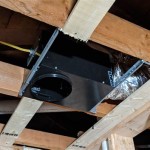Best Timber For Bathroom Vanity: A Comprehensive Guide
Selecting the appropriate timber for a bathroom vanity is a crucial decision, balancing aesthetics, durability, and resistance to moisture. The bathroom environment presents unique challenges, with fluctuating humidity and potential water exposure requiring careful consideration of material properties. The ideal timber should not only complement the overall bathroom design but also withstand the rigors of daily use and maintain its structural integrity over time. This article explores various timber options suitable for bathroom vanities, delving into their characteristics, advantages, and disadvantages to aid in making an informed choice.
Understanding the Challenges of Bathroom Environments
Bathrooms are inherently prone to moisture. Showers, baths, sinks, and even general humidity contribute to an environment that can be detrimental to wood. Without proper protection, timber can warp, rot, swell, or become susceptible to mold and mildew. These issues can compromise the structural integrity of the vanity, leading to costly repairs or replacements. Therefore, selecting timber with inherent moisture resistance or the ability to be effectively sealed and protected is paramount.
Furthermore, the aesthetic considerations should not be overlooked. The bathroom vanity often serves as a focal point, and the chosen timber should align with the overall design scheme. Whether the desired style is modern, traditional, rustic, or minimalist, the timber's color, grain pattern, and texture should contribute to the desired ambiance. This requires a balance between functional suitability and visual appeal.
Durable and Moisture-Resistant Timber Options
Several timber species are known for their durability and natural resistance to moisture, making them suitable candidates for bathroom vanities. These timbers often possess inherent oils and densities that deter water absorption and decay.
Teak: Teak is renowned for its exceptional water resistance, owing to its high oil content. Commonly used in marine applications, teak naturally repels water and resists rot, decay, and insect infestation. Its durability and longevity make it a premium choice for bathroom vanities, although it typically comes at a higher cost.
Cedar: Cedar, particularly Western Red Cedar, offers a pleasant aroma and natural resistance to moisture and insects. Its lightweight nature and dimensional stability contribute to its suitability for bathroom vanities. Cedar's characteristic reddish-brown hue adds warmth and visual appeal, making it a popular aesthetic choice. Proper sealing is still recommended to further enhance its water resistance.
Oak: Oak, both White Oak and Red Oak, is a hardwood known for its strength and durability. While not as naturally water-resistant as teak or cedar, White Oak possesses closed cellular structure, making it significantly more resistant to water penetration than Red Oak. With appropriate sealing and finishing, White Oak can perform well in a bathroom environment. Its classic grain pattern and versatility in staining options make it a versatile choice for various bathroom styles.
Cypress: Cypress, especially Bald Cypress, is another option known for its water resistance. Grown in swampy environments, Cypress has developed natural defenses against decay and rot. Its light color and attractive grain pattern make it a visually appealing choice, and it accepts stains and finishes well. Cypress is becoming increasingly popular for bathroom applications owing to its balance of durability, aesthetics, and cost-effectiveness.
Mahogany: Mahogany is a hardwood known for its stability, durability, and beautiful reddish-brown color. While not inherently as moisture-resistant as teak, mahogany's tight grain and resistance to warping make it a good choice for bathroom vanities when properly sealed. It is a popular choice for those seeking a luxurious and elegant look.
Engineered Wood Options And Considerations
While solid timber offers natural beauty and durability, engineered wood products can provide cost-effective and stable alternatives for bathroom vanities. Engineered wood, such as plywood and MDF, is manufactured by bonding wood strands, fibers, or veneers together with adhesives. These materials can be engineered to exhibit enhanced water resistance and dimensional stability.
Marine-Grade Plywood: Constructed with waterproof glue and using high-quality veneers, marine-grade plywood is specifically designed for marine applications and can withstand prolonged exposure to moisture. Its layered construction provides excellent strength and stability, making it a reliable choice for bathroom vanities. Proper edge sealing is crucial to prevent water from penetrating the core.
Medium-Density Fiberboard (MDF): MDF is a composite material made from wood fibers bonded together with resin. While not inherently water-resistant, MDF can be treated with moisture-resistant coatings and sealants to enhance its performance in a bathroom environment. MDF is a smooth and stable surface that is easy to paint or laminate, making it a versatile option for achieving various aesthetic styles. However, it is essential to ensure that the MDF is specifically designed and treated for moisture resistance, and that all edges and surfaces are thoroughly sealed.
Veneered Plywood: Veneered plywood combines the stability of plywood with the aesthetic appeal of a natural wood veneer. This option allows for the look of solid wood at a lower cost, while also providing better dimensional stability than solid wood in humid environments. The veneer should be applied to a high-quality plywood core, and all edges should be carefully sealed to prevent moisture penetration.
Protective Measures: Sealing and Finishing
Regardless of the timber chosen, proper sealing and finishing are critical for protecting the bathroom vanity from moisture damage. These protective measures create a barrier that prevents water from penetrating the wood, thereby prolonging its lifespan and maintaining its aesthetic appeal.
Penetrating Oils: Penetrating oils, such as teak oil or tung oil, soak into the wood fibers, providing a degree of water resistance from within. These oils enhance the natural beauty of the wood grain and provide a warm, natural finish. However, they may require periodic reapplication to maintain their protective properties.
Varnishes: Varnishes create a hard, durable, and water-resistant coating on the wood surface. Polyurethane varnish is a popular choice for bathroom vanities owing to its excellent water resistance and durability. Varnishes are available in various sheens, from matte to high gloss, allowing for customization of the final appearance. Multiple coats of varnish are typically required to achieve optimal protection.
Sealants: Sealants, such as silicone caulk or epoxy resin, are used to seal joints and edges, preventing water from seeping into the wood. These sealants create a waterproof barrier that is essential for protecting areas that are prone to moisture exposure, such as where the vanity meets the countertop or the floor.
Paint: Paint can provide a durable and water-resistant finish for bathroom vanities, especially when applied over a suitable primer. Oil-based paints offer excellent water resistance, but acrylic latex paints are also a viable option when properly applied and sealed. Paint allows for a wide range of color choices and can be easily updated to match changing bathroom decor.
Prior to applying any sealant or finish, the timber surface should be properly prepared by sanding it smooth and removing any dust or debris. This ensures that the finish adheres properly and provides optimal protection. It is also essential to follow the manufacturer's instructions for application and drying times.
In summary, selecting the best timber for a bathroom vanity involves careful consideration of moisture resistance, durability, aesthetics, and cost. While naturally water-resistant timbers like teak and cedar offer superior performance, other options such as oak, cypress, and mahogany can be suitable when properly sealed and finished. Engineered wood products, such as marine-grade plywood and MDF, provide cost-effective and stable alternatives. Regardless of the timber chosen, proper sealing and finishing are essential for protecting the vanity from moisture damage and ensuring its longevity in the challenging bathroom environment.

Timber Vanity The Right Choice For Your New Bathroom

Wood Countertops In Bathrooms Centsational Style

How To Build A Diy Bathroom Vanity Angela Marie Made

What Are The Best Materials For Bathroom Vanities

Diy Wood Vanity In The Master Bathroom Space Between

Solid Wood Bathroom Vanity 60 Mid Century Modern Made From Reclaimed

Floating 4 Drawer Hardwood Timber Vanity Concrete Custom

Diy Rustic Bathroom Vanity Sammy On State

Thick Live Edge Black Walnut Vanity With Bottom Shelf

Glacier Bay Huckleberry 36 In W X 19 D 34 H Single Sink Bath Vanity Spiced Walnut With White Engineered Stone Top Huckleberry36sw The Home Depot
Related Posts







